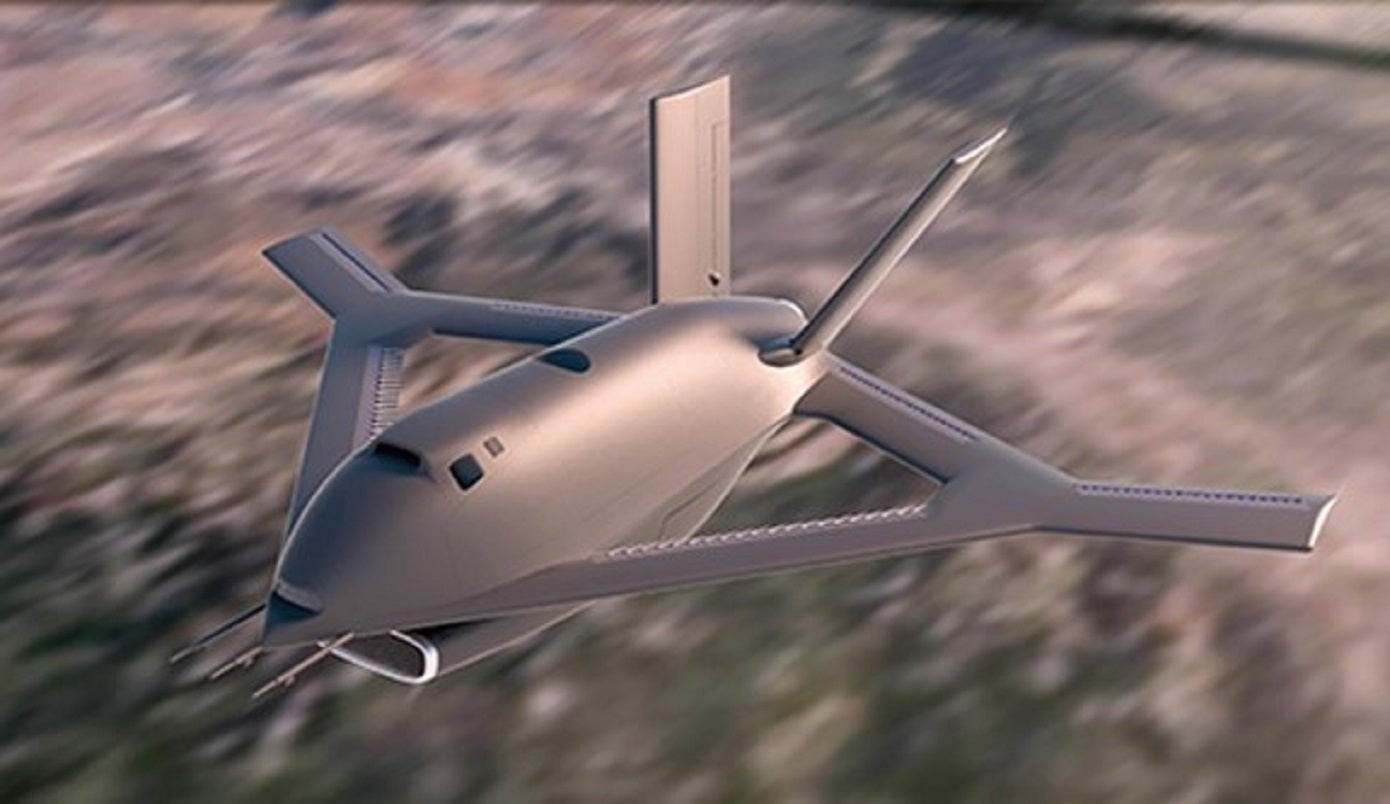
The US Defense Advanced Research Projects Agency (DARPA) has implemented the third phase of its Control of Revolutionary Aircraft with Novel Effectors (CRANE) programme.
DARPA have selected Aurora Flight Sciences, a Boeing company, to build the future aircraft that uses active flow control (AFC) actuators as opposed to traditional flight control surfaces (FCS).
This latter method is the standard form of flight used by aircraft since the Wright brothers’ first controllable aircraft in 1903. FCS involves ‘wing warping’ to shape the flow of air over the aircraft surface using flight controls on the exterior of the wings and tail. Contrary to this archetype, the X-65’s ACF effectors use jets of air from a pressurised source – a novel form of wing warping.
“AFC could improve aircraft performance by removing jointed surfaces, which currently drive design configurations that increase weight and mechanical complexity,” the agency said. Meanwhile, the AFC concept offers greater stealth in reduced weight, but also in its diamond X-shape.
DARPA completed phase one preliminary design on 17 January 2023. The second phase involved detailed design and development of flight software and controls, culminating in a critical design review of the X-plane demonstrator. Subsequently, in May 2023 the aircraft received its official designation as the X-65.
Aurora Flight Sciences has already started fabricating the X-plane; the X-65 is scheduled to be rolled out in early 2025 with the first flight planned for summer of the same year.
How does the X-65 actually work?
The 7,000+ pound, unmanned X-65 will have a 30-foot wingspan with the capability of reaching speeds up to Mach 0.7. Its weight, size, and speed – similar to a military trainer aircraft – make the flight-test results immediately relevant to real world aircraft design.
The X-65 will be built with two sets of control actuators – traditional flaps and rudders as well as AFC effectors embedded across all the lifting surfaces. This will both minimise risk and maximise the programme’s insight into control effectiveness. The plane’s performance with traditional control surfaces will serve as a baseline; successive tests will selectively lock down moving surfaces, using AFC effectors instead.
“We’re building the X-65 as a modular platform – wing sections and the AFC effectors can easily be swapped out – to allow it to live on as a test asset for DARPA and other agencies long after CRANE concludes,” Dr. Richard Wlezien, the programme manager, stated.



